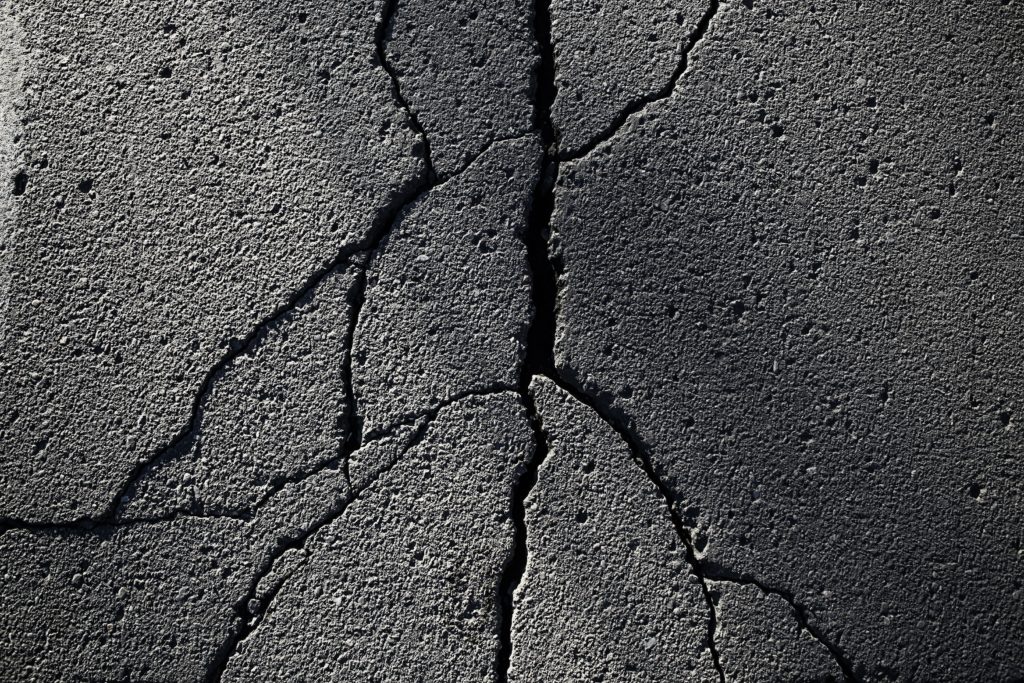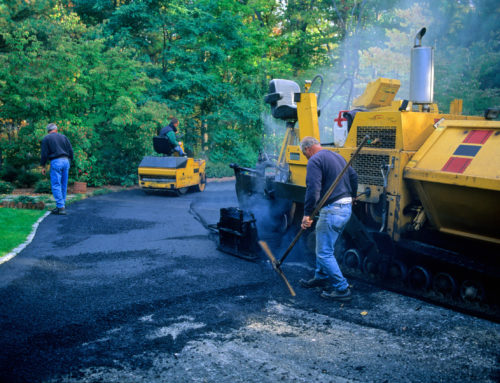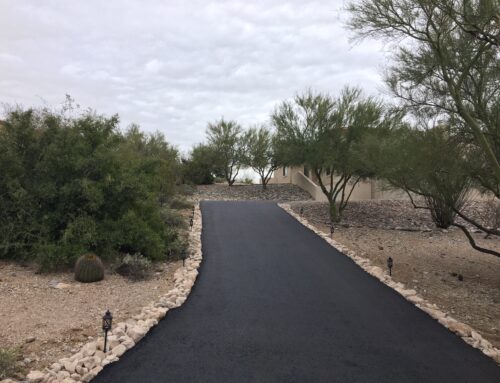Summers and their accompanying heat are pretty intense on our asphalt surfaces! For many, summer is the perfect time to get get in and make asphalt repairs, but if you weren’t able to get around to it these past few months, here’s what to look for and what to repair ASAP.
Wait, Summer Damages Asphalt?
Yep! When the temperatures heat up, your asphalt does right with it. Once it hits a certain point that asphalt will actually start to lose its sturdiness becoming a bit softer. When asphalt is soft, it’s more susceptible to being scratched, punctured, sunk, dented, etc. When asphalt has gone soft, all sorts of things can do damage such as tools or even just parking for a long time. In addition to the heat, the extended hours of sunlight expose the asphalt to more UV radiation which can have an effect on the aesthetic conditions of your asphalt.
Okay, so you know that the increased heat can cause damage, what should you be on the lookout for fixing?

Perform an Inspection
Take a walk around your asphalt lot or stretch of pavement and look for signs of damage. These can be cracks, break in the pavement, potholes, even bubbles or bumps, divots. Some may be relatively minor but note them anyways. While they may seem small or inconsequential they can grow and become costly repairs down the line!
Deep Clean
With any damage noted, it’s time to do a good cleaning. It’s possible your pavement took a beating in a recent monsoon, maybe some nearby trees or foliage got knocked down in the wind, or an oil leak has been sitting for a bit. Whatever the case may be, before you get to work repairing, you need to get to work cleaning!
We recommend using Simple Green cleaners and degreasers when it comes to cleaning asphalt. It’s better for the environment and less harsh on the asphalt itself. Regardless of how you do it, cleaning up chemicals and oil stains is crucial before performing any repairs. Patching an oil-stained crack can trap the harmful chemicals inside the structure of the asphalt, weakening it. Surgeons don’t stitch up a dirty cut, the same (albeit less gross) principle applies here!
Repair the Damage
Alright, the site is clean and now you’re ready to repair. Depending on the damage you may or may not want to call in an expert! Often repairing asphalt is not a job you want to DIY as there are can be a lot of specialized equipment that’s needed to fully repair or repave stretches. Some things you can do though!
In the case of cracks, you’ll want to follow one of our more robust how to crack repair guides. If during the summer a dent or divot was created in the asphalt you can repair it by filling in with a patch mix and compressing it using a tamping tool.
Regardless of what you need to do to repair, you need to make sure you’re taking the proper aftercare measures to keep the repairs holding up for a long time to come. That means a sealcoat!
Sealcoat Security
Once the repairs are all sorted, getting your asphalt sealcoated can do you a lot of good for a long time to come. A professionally installed seal coat protects asphalt from exposure, as well as refreshes the oils and binders in the asphalt, and smooths out any gaps or minor scratches in the surface. It’s more than just a protective measure, it’s a maker over!
Looking Ahead
At this point here in Arizona we’re nearing the end of monsoon season… we think. Quite frankly I wouldn’t count anything out this year. Whether another monsoon blows in or just the potential for fall and winter storms, you should look about and do your best to prevent any water damage from happening.
Take a look around your pavement and look for drainage problems. Does your asphalt have any lower areas that will allow water to pool? Is it installed poorly and doesn’t allow proper run off? All of these things are possible. If you can make sure there’s no nearby leaks or places for standing water to collect. If there is, well you’ll need some professional help lest you have to deal with a pothole developing soon enough.
While you’re looking ahead, be sure to watch the weight, specifically what kind of weight is being put on your asphalt. Look for anything heavy that’s been sitting for a while and make sure to move it and use a block of wood or a plywood board to help redistribute the weight. If left untouched the heavy load will cause damage to the asphalt. This is especially crucial for construction sites or areas that are dealing with a lot of heavy equipment.
Post summer maintenance might be just what the doctor ordered! If your asphalt needs anything more than the most minor of TLC, you may want to go ahead and call in a profession to perform the work to the highest standard, saving you money in the long run and avoiding problems in the first place!



